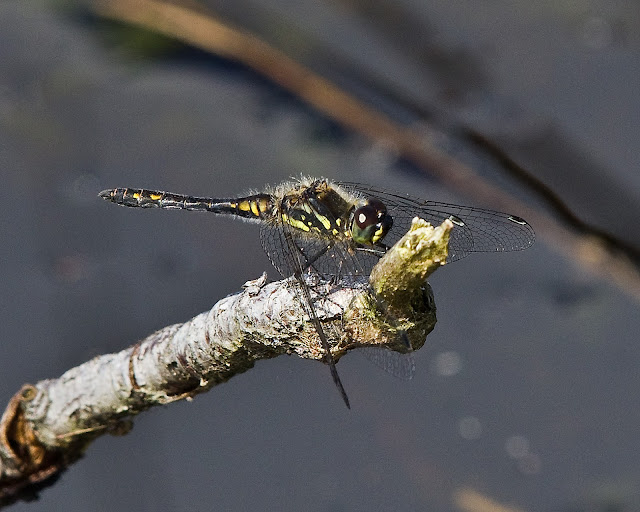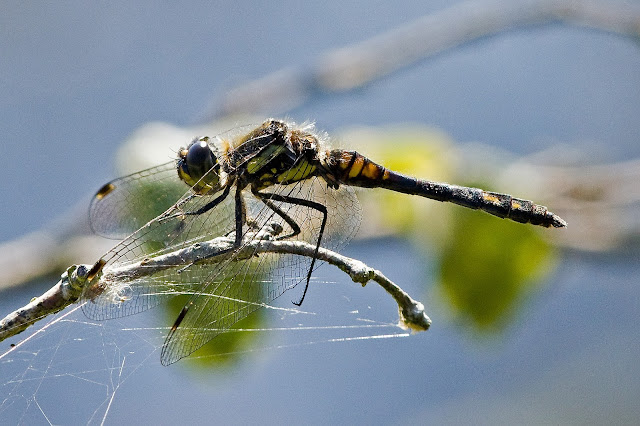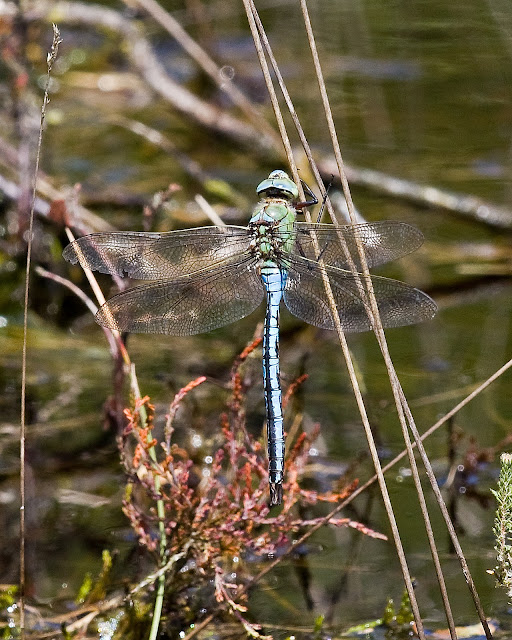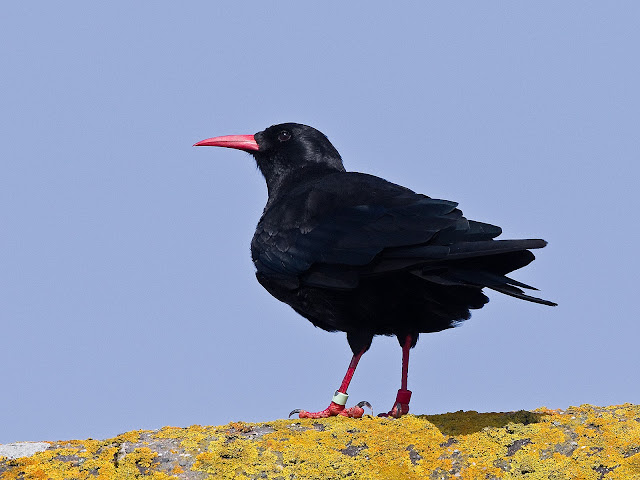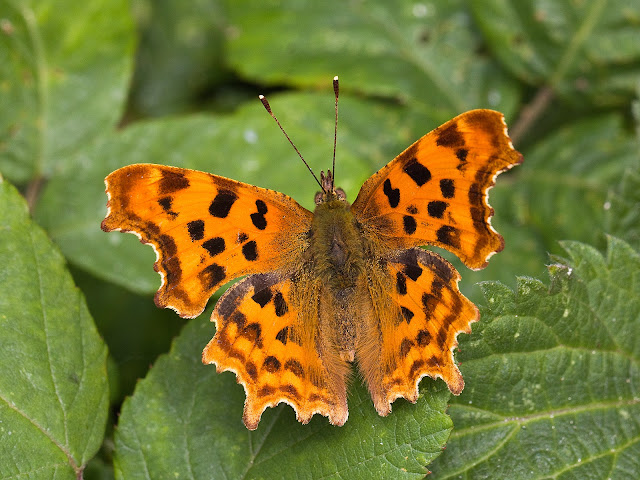The blog is called "Small Copper" as this is probably my favourite butterfly and this is the first one that I have seen this year. It is always a joy to see but it seems to be getting rarer each year.
Actually the day was really about another butterfly. I have been commenting a lot recently about the shortage of blue butterflies this year. Today that all changed. We went up onto Windover Hill and there were Chalkhill Blues everywhere. The numbers probably ran into the thousands and that was just in the areas we walked through.
The classic shot is of a Chalkhill nectaring on Knapweed but there was little chance of that today. The wind was blowing strong across the hill and the butterflies were staying low.
The Chalkhills are very variable in appearance, with lots of identified aberrations and they were a great favourite of the Victorian collectors.
Ninety percent or more of the Chalkhills flying were male, although the more secretive females were starting to put in more of an appearance as the day wore on. With that number of males flying, I can understand why the females were staying hidden.
We also found a good number of Grayling although perhaps not to the levels we had seen in previous years.
This is a butterfly that is reluctant to fly, relying on its cryptic camouflage to keep it hidden. It can be difficult to spot unless it takes to the air and even when you know where it landed it is difficult to find.
After much searching and chasing up and down a forty five degree slope I did manage to get a few shots where more detail could be seen. Although some of it is not very pleasant.
In the shot above the eye on the upper wing is just starting to emerge. Th butterfly will often flick this up to frighten off potential predators.
These two shots show examples of infestation by the larvae of the mite Trombidium breei. These live on the blood of the butterfly and can often be found on a large proportion of the colony. It is not quite as bad as it looks. The larvae only stay attached for two or three days, although of course some butterflies only live a few days. Investigation has shown no evidence of the mite affecting the lifespan or within habitat movement rates of the butterflies.
If you want more information click on the link below.
See also my blog of July 2014 showing a female Chalkhill Blue carrying at least fifteen of these mite larve.
There were a good number of other butterfly around today. Dark Green Fritillary, Small Skipper, Large Skippers, Whites, Peacock, Red Admiral, Brimstone, Small Heath, Meadow Brown, Ringlets, Gatekeeper, Marbled White, Common Blue, Tortoiseshell, and a possible but very elusive Silver Spotted Skipper.
We also had a Migrant Hawker, shown below.
A good day with more butterflies in both quantity and variety than I have seen so far this year.

















